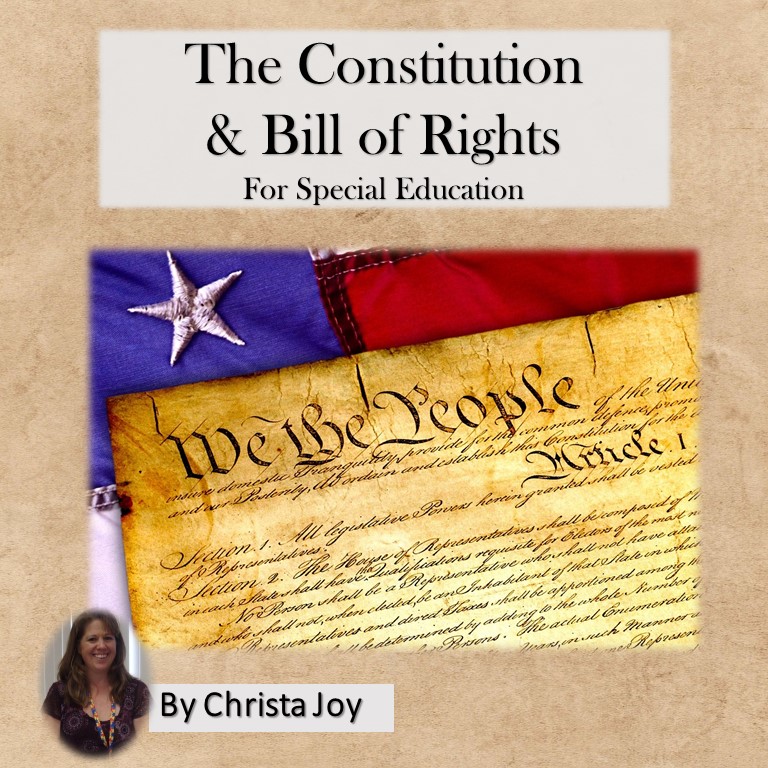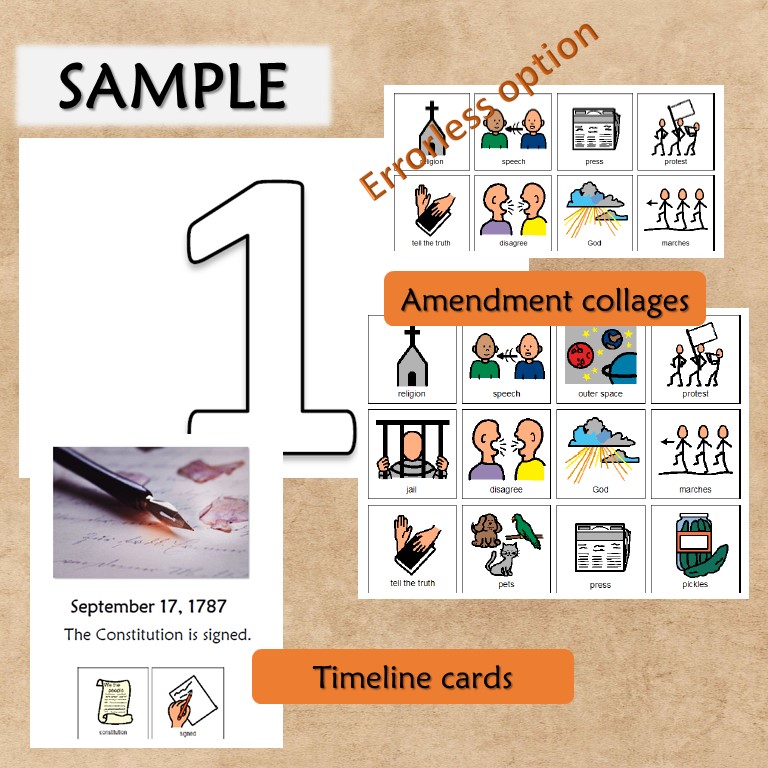September 17 is Constitution Day. If you teach in a special education classroom, especially if you teach students with truly significant challenges, you may be at a loss about how to teach this material. You may even be asking yourself IF you should even bother teaching about this topic.
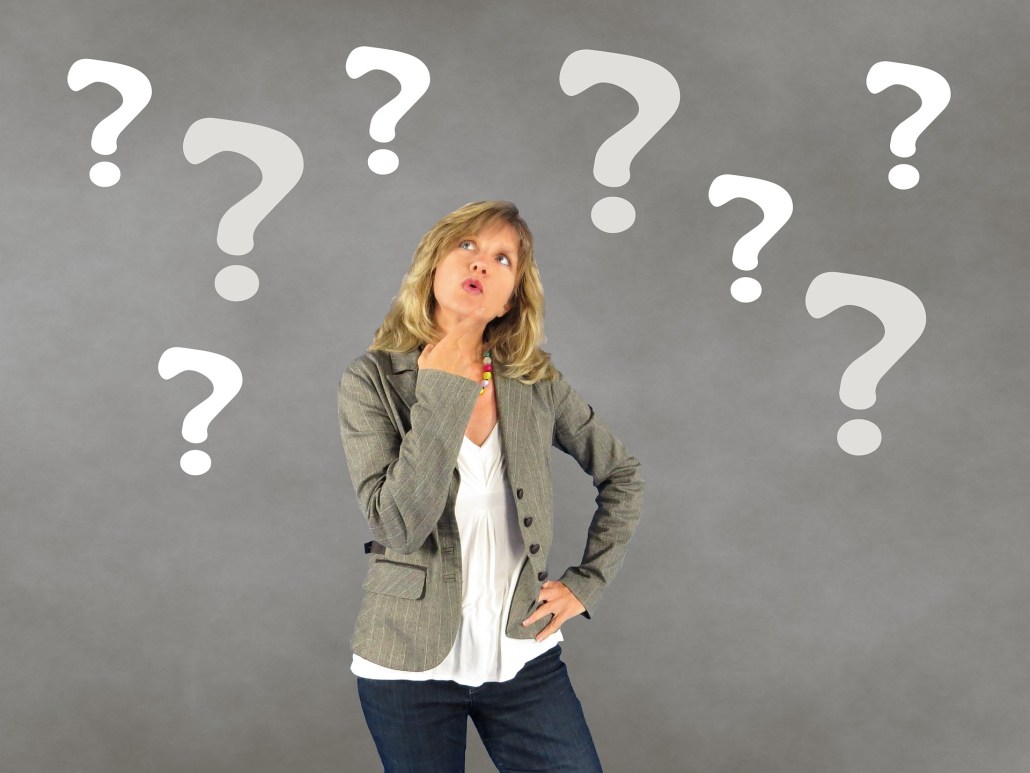
If you are asking yourself IF you should even bother teaching about the Constitution, then the answer is YES. If other students in the school are expected to learn about the Constitution, then your students deserve the same opportunity to learn how this important document shapes everything about our government and who we are as a democratic country.

So, once you decide to tackle this challenging content with your students, many of whom may not even be able to read, the next question is HOW. That is what this post is about. HOW to teach your students, even those with significant intellectual disabilities, about the Constitution and the Bill of Rights. So, let’s dive in…

1. Finding appropriate information
Let’s face it, once you leave elementary school, it can be very challenging to find text books and other printed material that your students can access in a meaningful way. That means we often are left modifying resources provided to us by our administrations, or we are supporting students so heavily that they are not truly engaging with the content we are using.
Unfortunately, the best option can be a time-consuming one: writing our own books. It is critical that we start with a resource that can build that foundation of basic knowledge we can then start to build upon.
No worries, I have you covered on this one. You can download this book I wrote on the Constitution for FREE by clicking the button below. In the unit I created, I actually have challenging and easy versions for this book. (Below is the example of easier version.)
2. Building vocabulary
As we introduce this new content on the Constitution, there are so many new words that our students may have never been exposed to. Focusing specifically on new vocabulary should be an intentional part of your lesson. Once you identify the vocabulary words you want to focus on, be sure to read my blog post about 10 activities you can do with those words to help students practice them in engaging and effective ways. Click HERE to read that post.
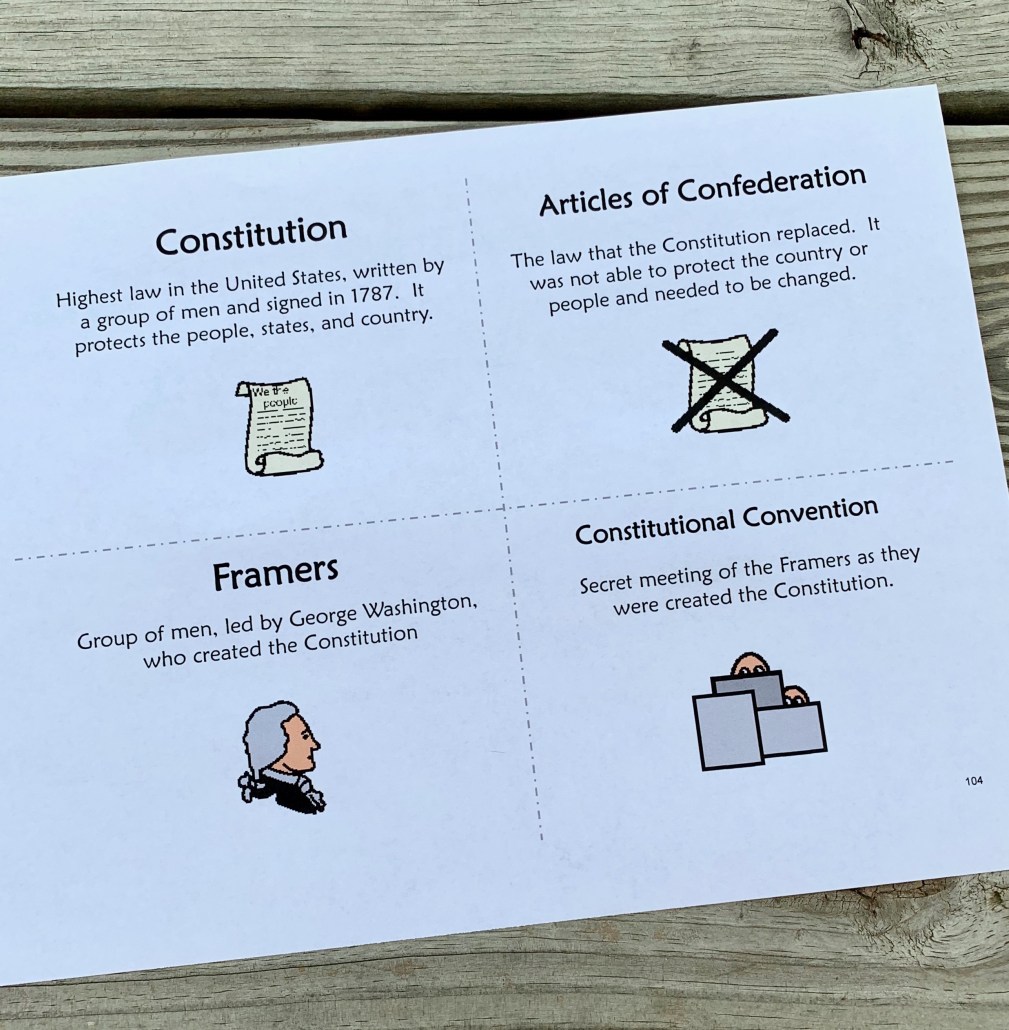
3. Making it visual
Another crucial step in teaching about something like the Constitution, is to make it as visual as possible. I am a big fan of circle maps as a way to organize material so students can quickly look at all the facts and see how they are all related and support the main topic. You can choose to make it errorless by including only correct answers, or mix in wrong answers to make it a little more challenging for high level students. Just be careful… this is NEW content for many of your students, and even though you may think they are ready for a non-errorless option, it may not be the case. It may take a few days or weeks of repetition before the students are able to discern correct vs incorrect choices.
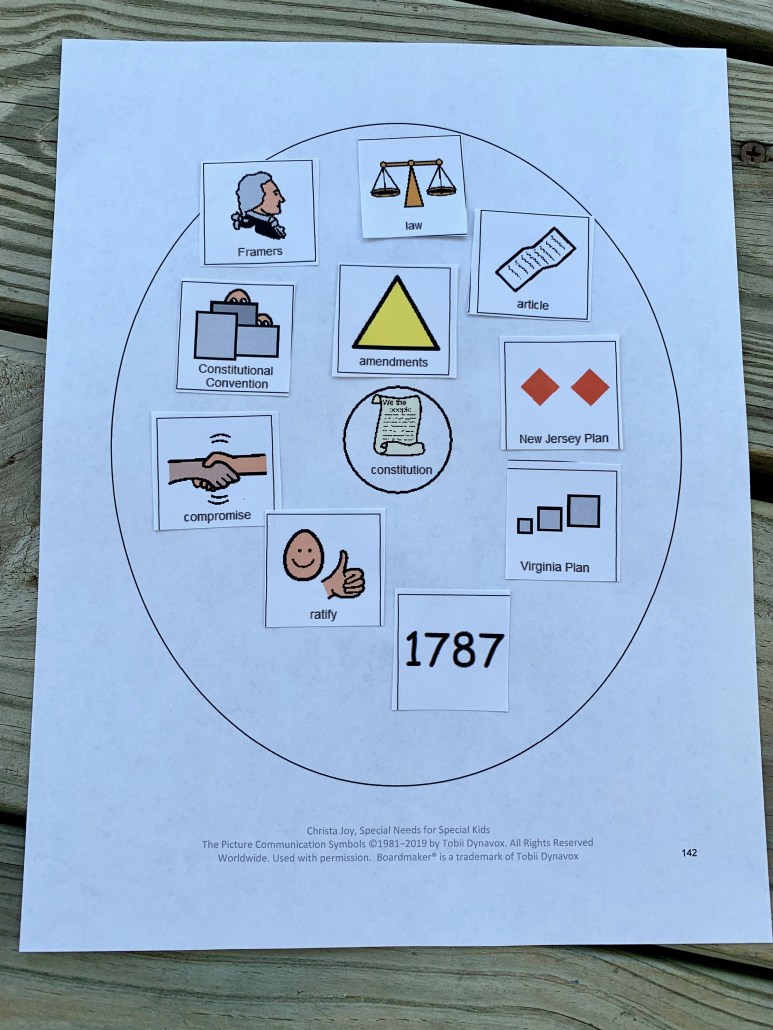
Another good visual tool when teaching about the Constitution, and specifically The Bill of Rights, is to have students do collages. This is very similar to the idea of a circle map, but just in a different visual format. Using different materials is one way to increase the likelihood the material you are teaching will generalize and deepen the student’s understanding.
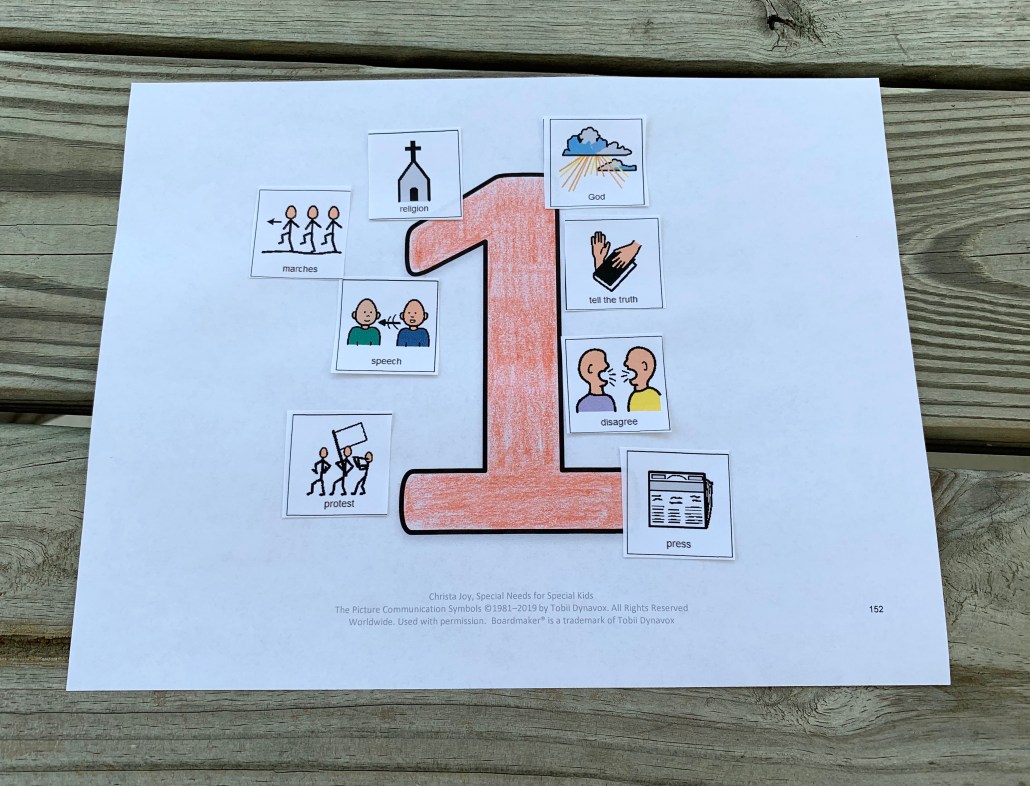
4. Adding movement when possible
All students like to get up and move around the classroom. In a special education setting, having kids moving around can sometimes lead to problem behaviors. So, I like to make this as purposeful and clear as possible. Timelines are a great activity to use when teaching about the Constitution, and it gets kids up and moving around.
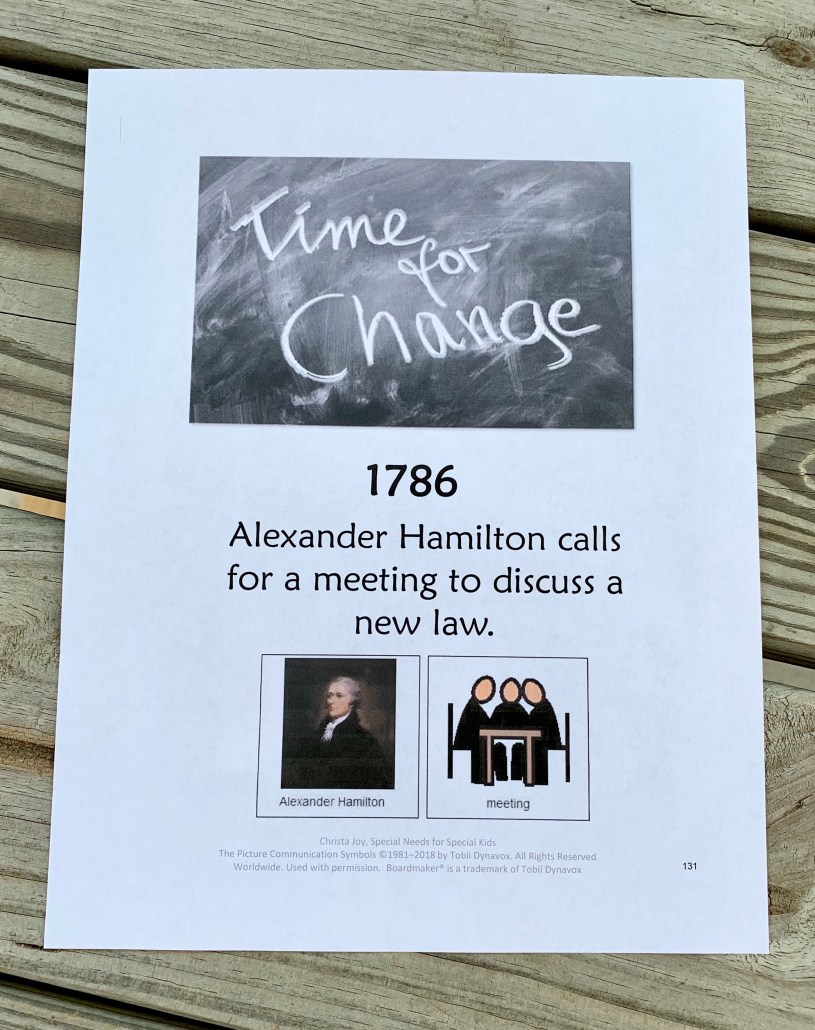
I do have timeline cards included in the unit I created, but if you are doing this on your own, it does not have to be that fancy. Simply writing the number of the amendment on a large piece of Construction paper and the date is was passed is all you need. Students take a card and then they position themselves in the correct order in the front of the room.
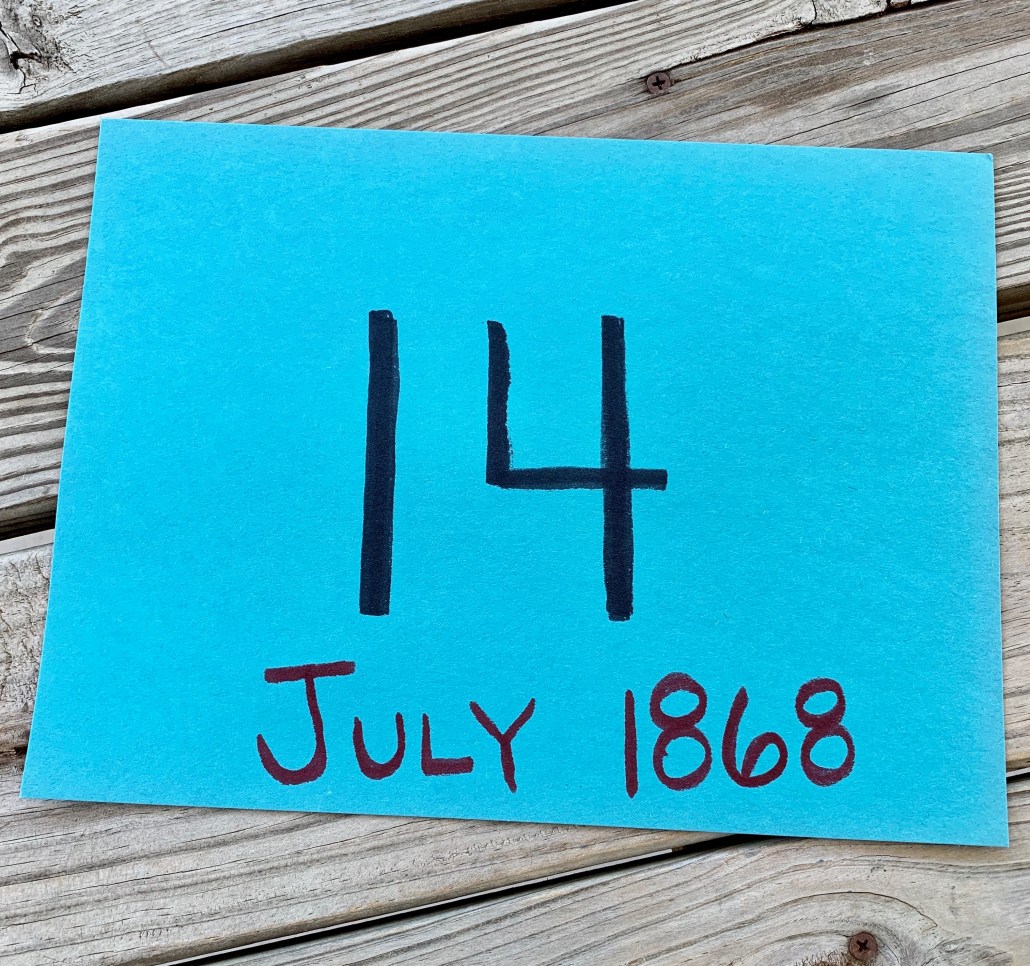
For even more structure, tape a small index card on the floor for each amendment so students know exactly where to stand. By the end of your time teaching about the Constitution, you will probably be able to remove these small reminder cards.
Finally, read my blog post all about how to use timelines most effectively as part of your lesson. Click HERE. It is a great way for kids to access the information in a more interactive way.
5. Assessing what students have learned
After all the work you put into teaching about the Constitution, surely you want to know how much, if any, material your students have learned. Doing a formal assessment, however, starts on DAY 1.
Before you ever start teaching about the Constitution, you need to give every student a pre-assessment. I recommend using the same assessment you will be using at the end of unit. This way, you will know exactly how much growth your students have had over the course of the last few weeks.
And, there is one other great benefit to doing a pre-assessment. By giving a pre-assessment, it forces you to create the assessment before you even start teaching. Why does this help? If you are planning a trip, the route you take is based on where you are now AND where you want to go. If you are not clear on exactly what you want your students to learn, then you risk teaching a lot of disconnected facts that never create a full picture. So, take the time to make an assessment BEFORE you start teaching about the Constitution, and administer that to your students as a pre-assessment tool before you begin to teach a single thing.
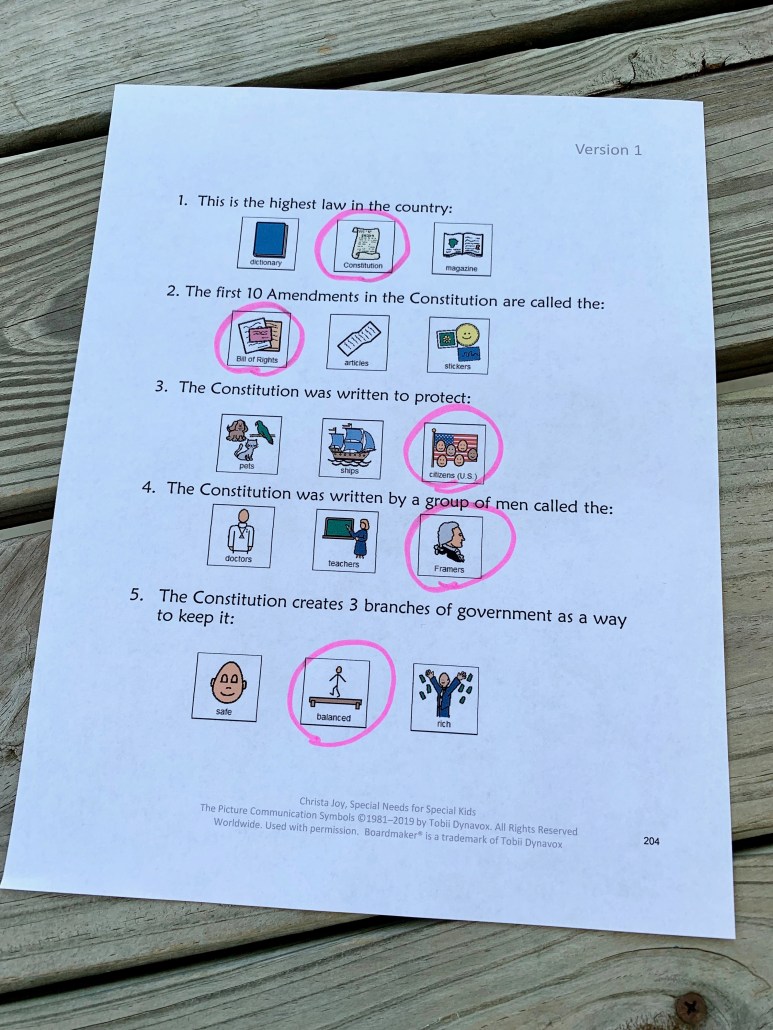
I hope this has inspired you to create your own unit on the Constitution. I have done the heavy lifting for you by providing you with the book you can base all the rest of your activities on.
But, if you are still stretched for time, and just want the complete unit, then be sure to grab my complete unit from my TPT store. You can click HERE to check it out. There are over 200 pages of material, including 2 weeks of lesson plans. Wouldn’t it be nice to just have the right tools for once? Let me help you claim back some more time, and make your lesson planning a little bit easier.

